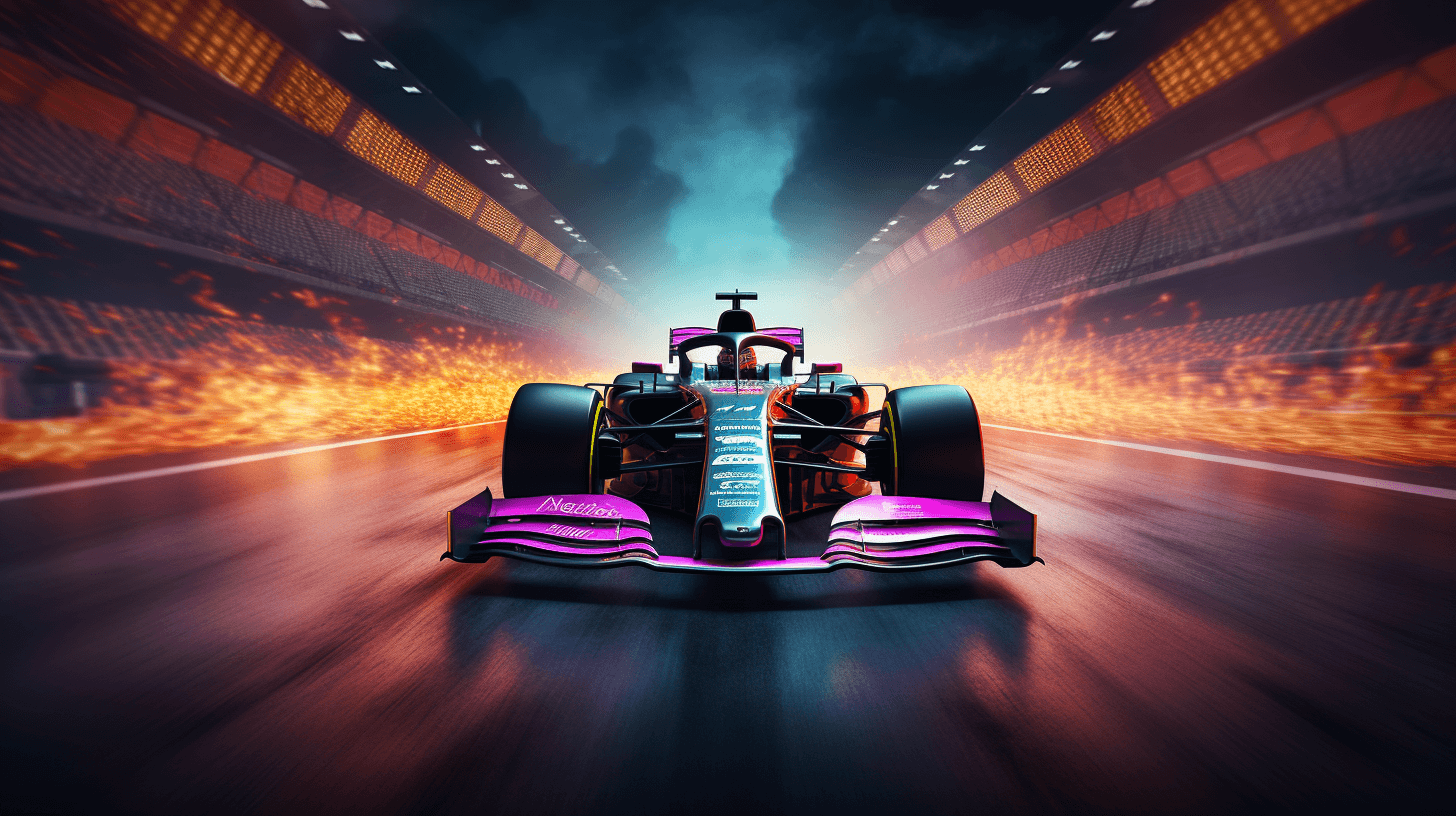📰 Formula 1 Crew Dem Already Hard at Work fo’ Da Powah Units Coming in 2026! 🏎️🔧
⬇️ Pidgin | ⬇️ ⬇️ English
Before we even finish up wit Formula 1’s 2023 season, da manufacturers dem already bustin’ dey tail gettin’ ready fo’ 2026. Das when da new powah-unit rules goin’ kick in and last ’til 2030. 💪🏁💥
Dis gonna be da biggest shake-up since 2014 wen dey brought in dem 1.6-liter V6 turbocharged engines. Gonna have moa manufacturers and a push fo’ moa sustainability. 🌍⚡🌱
“Eh, it’s unreal dat Formula 1 goin’ have six engine manufacturers startin’ from 2026,” say Stefano Domenicali, da big boss of Formula 1. “Our worldwide reach and growth give brands unreal opportunities, an’ dis show we headin’ in da right direction by switchin’ to sustainable fuels in 2026.” 🌍🚀💪
Da rules goin’ make da current V6 engines use fully sustainable fuels, generatin’ moa electrical powah. And dey takin’ out da complicated MGU-H, one part of da powah unit that make moa energy. Da manufacturers also gotta stick to a cost limit. 💧💡💰
Da powah-unit makers fo’ 2026 gonna be Mercedes, Ferrari, Alpine, Audi, Honda, and a combo of Red Bull and Ford. Dis bring Ford back to Formula 1 aftah disappearin’ in 2004 wen dey owned da Jaguar Racing team. Red Bull’s current partner, Honda, goin’ supply Aston Martin, and Audi goin’ supply Sauber, who might change dey name once Audi take ovah in 2026. 🏎️🔌🤝
“We outgrew bein’ a customer,” say Christian Horner, da Red Bull boss. “Havin’ da powah unit right here, fully integrated wit da chassis, an’ da synergy dat creates, da benefits unreal. Dis stay excitin’, takin’ on a new challenge, like a start-up company facin’ off against da big brands in Formula 1 as a powah-unit maker.” 🏁🚗🛠️
“Our drivetrain fo’ 2026 gettin’ built right now,” say Oliver Hoffmann, one of da Audi big shots, back in April. 🔩🔧🗓️
Honda been in an’ outta Formula 1, but dey all in fo’ 2026, feelin’ confident in da championship’s direction. 💯💪
“One big reason we takin’ up dis new challenge in F1 is ’cause da top racin’ series in da world tryin’ to be sustainable,” say Toshihiro Mibe, da head honcho of Honda, wen he announce Honda’s participation. He say dis align wit Honda’s aim fo’ carbon neutrality, an’ goin’ become a platform fo’ developin’ dey electrification technologies. ⚡🌱🏁
Wit six powah-unit manufacturers, we goin’ have six official teams, where da chassis an’ engine designers can work together real close. 🏎️🛠️🤝
“You gotta be fully integrated wit yo’ P.U. [powah unit] fo’ design da right chassis fo’ da rules,” say Mike Krack, da boss of Aston Martin. Right now, Aston Martin be a Mercedes customer, but come 2026, dey gonna be Honda’s official team. “You can get moa info earlier ’bout energy management, which aero-configuration you gotta use, an’ set da right targets. Dis one big advantage undah dese rules.” 🏎️🔌📝
But not every team goin’ have an official partner. Haas goin’ be one of four customer teams, meanin’ dey gonna buy a powah unit from one of da manufacturers.
“In 2026, we get six engine manufacturers. How we know all goin’ do one good job?” say Guenther Steiner, da Haas boss. “Might be two or three doin’ one lousy job, an’ if you wit da right manufacturer, you already ahead of da oddahs. So dey pros to bein’ a customer instead of an official team.” 🏎️🚗💼
NOW IN ENGLISH
📰 Formula 1 Teams Are Already Working on the Power Units Coming in 2026! 🏎️🔧
With Formula 1’s 2023 season not even halfway through, manufacturers are already putting in the work for 2026. That’s when revised power-unit regulations, spanning until 2030, will come into play. 💪🏁💥
This will mark the most significant rule overhaul since the introduction of the 1.6-liter V6 turbocharged engines back in 2014. The upcoming changes will bring in more manufacturers and emphasize greater sustainability. 🌍⚡🌱
Stefano Domenicali, the chief executive of Formula 1, expressed his excitement, stating, “It is fantastic that Formula 1 will have six engine manufacturers from 2026. Our global platform and growth provide brands with huge potential, and it shows our plans to move to sustainable fuels in 2026 is the right approach.” 🌍🚀💪
Under the new regulations, the current V6 engines will run on fully sustainable fuels, producing more electrical power. The complex MGU-H component, which generates additional energy, will be removed. Furthermore, engine manufacturers will be subject to a cost cap. 💧💡💰
The power-unit manufacturers for 2026 will include Mercedes, Ferrari, Alpine, Audi, Honda, and a partnership between Red Bull and Ford. This partnership marks Ford’s return to Formula 1 after its ownership of the Jaguar Racing team ended in 2004. Red Bull’s existing partner, Honda, will supply Aston Martin, and Audi will supply the team currently known as Sauber, though its name may change after Audi takes majority ownership in 2026. 🏎️🔌🤝
Christian Horner, the team principal of Red Bull, expressed his enthusiasm, saying, “We’ve outgrown being a customer. For us to have the power unit on site, integrated fully with the chassis and the synergies that creates, the advantages are significant. It’s exciting, taking on a new challenge, a start-up company taking on some iconic brands in Formula 1 as a power-unit manufacturer.” 🏁🚗🛠️
Oliver Hoffmann, an Audi board member, highlighted the importance of the current efforts, stating, “The foundation of our drivetrain for 2026 is being laid today.” This emphasizes the long-term planning and preparation required for the upcoming regulations. 🔩🔧🗓️
Honda, a manufacturer that has previously come and gone from Formula 1, has recommitted for 2026, inspired by the championship’s commitment to sustainability. Toshihiro Mibe, the chief executive of Honda, explained, “One of the key reasons for our decision to take up the new challenge in F1 is that the world’s pinnacle form of racing is striving to become a sustainable racing series. This is in line with the direction Honda is aiming toward carbon neutrality, and it will become a platform which will facilitate the development of our electrification technologies.” ⚡🌱🏁
With six power-unit manufacturers, there will also be six works teams, allowing for closer integration between chassis and engine designers. Mike Krack, the team principal of Aston Martin, emphasized the advantages of this collaboration, stating, “You have to be fully integrated with your power unit to design the right chassis for the regulations. It provides much more information early on regarding energy management, aero-configuration, and setting the correct targets. It’s a significant asset under these kinds of regulations.” 🏎️🔌📝
However, not every team will have an official works partnership. Haas, for example, will be one of four customer teams, meaning they will purchase a power unit from one of the manufacturers. Guenther Steiner, the team principal of Haas, highlighted the potential benefits of being a customer rather than an official works team, stating, “In 2026, there are six engine manufacturers. How do you know that all will do the same good job? There could be two or three that do a worse job, and if you are with the right manufacturer, you are ahead of the others. So, there are pros as well to being a customer.” 🏎️🚗💼







